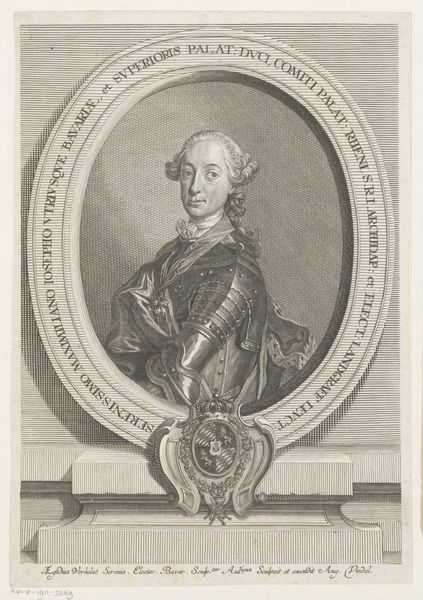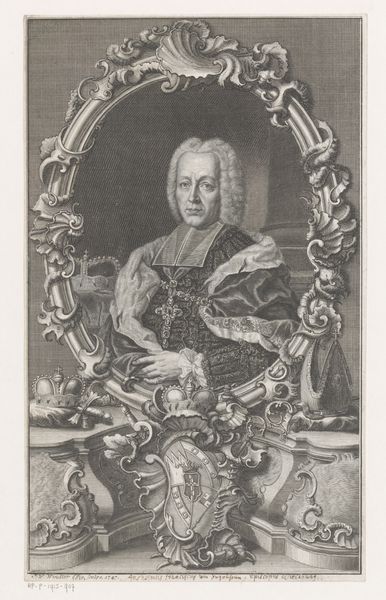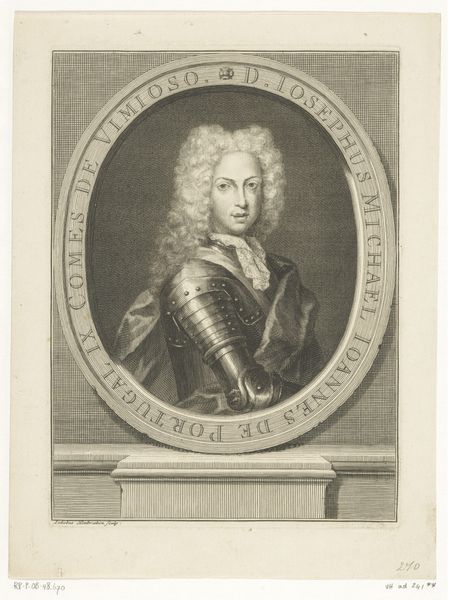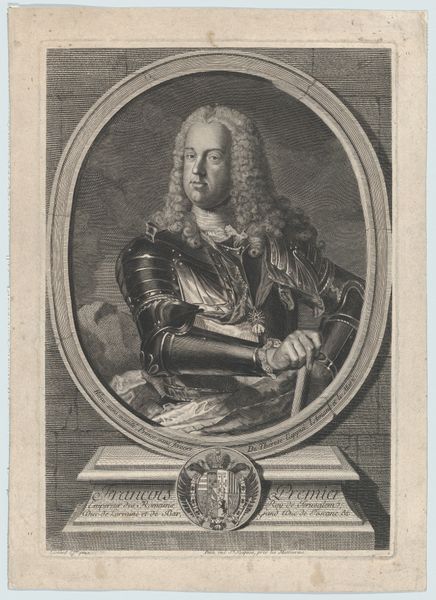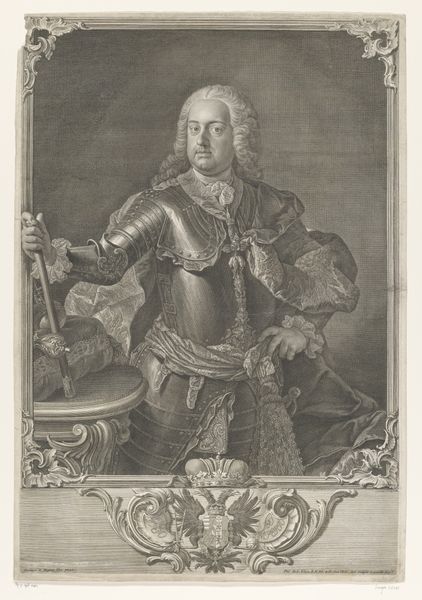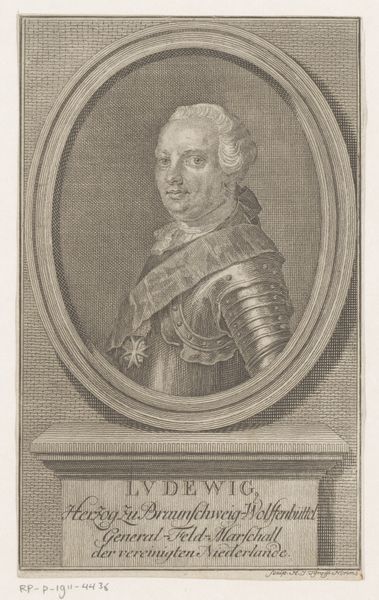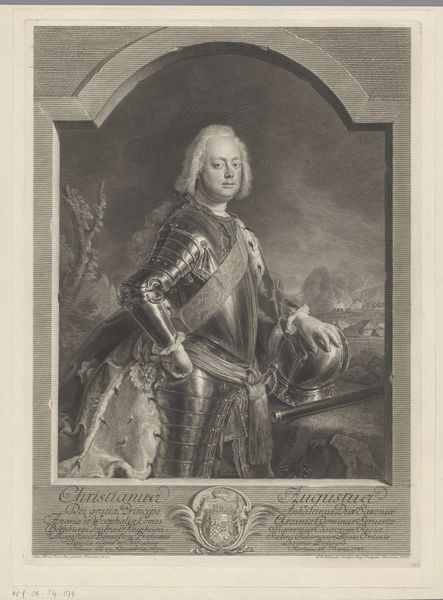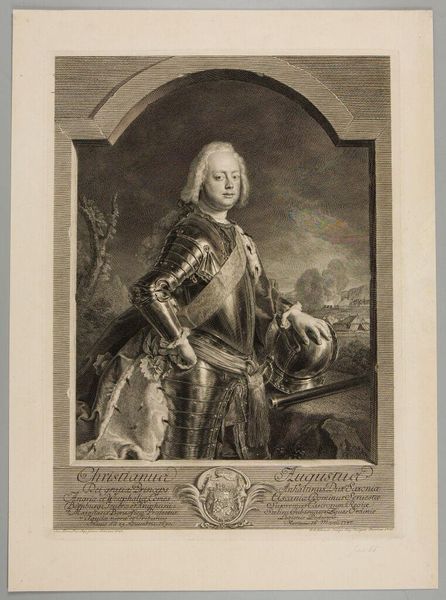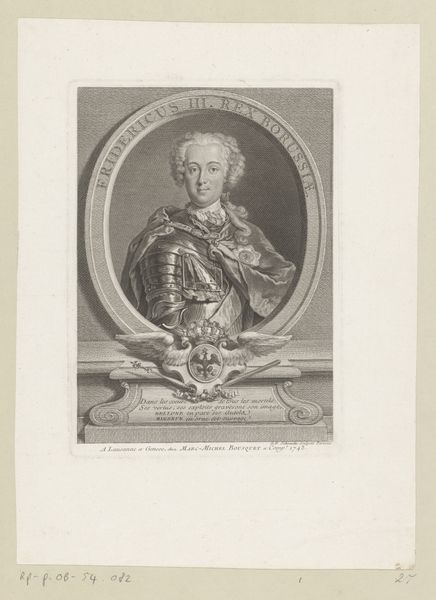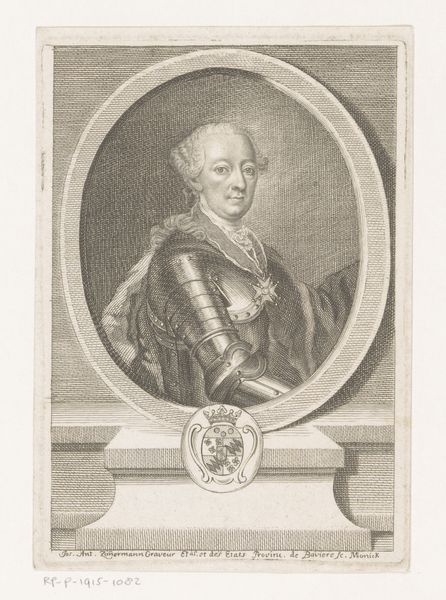
Dimensions: height 395 mm, width 260 mm
Copyright: Rijks Museum: Open Domain
Editor: Here we have Gottfried von Steinberg’s "Portret van Maximiliaan III Jozef, keurvorst van Beieren," an engraving, placing its creation somewhere between 1745 and 1782. The detail is quite remarkable, especially given the medium. What strikes me is how this formal portrait also seems to subtly hint at the weight of leadership. What do you make of it? Curator: This portrait exemplifies the role of art in legitimizing power during the Baroque era. The print served a crucial public function, disseminating the image and authority of Maximilian III Joseph throughout Bavaria and beyond. Consider the inclusion of the Electoral coat of arms – it's not merely decorative, it's a potent symbol of lineage and the divinely sanctioned right to rule. How does that framing affect our understanding of Maximilian Joseph, do you think? Editor: It makes him seem almost untouchable, set apart from everyday life. The oval frame feels like a window into a different, more elevated reality. Does the choice of engraving, as opposed to painting, have any bearing on that? Curator: Absolutely. Engravings allowed for mass production and widespread circulation. Unlike an oil painting seen only by a select few, this print democratized access to the ruler's image. This accessibility helped reinforce his position within the collective consciousness. Think about the messages this portrait conveys about Bavarian identity and Maximilian’s role in shaping that. Editor: It's interesting how the same image can serve both to elevate and to distribute power. The detail encourages close study but the medium allows for a very wide reach. Thanks for helping me think about that dynamic. Curator: It highlights the fascinating paradox inherent in art commissioned by the elite. By understanding the socio-political context of its creation and dissemination, we get a much richer appreciation.
Comments
No comments
Be the first to comment and join the conversation on the ultimate creative platform.
